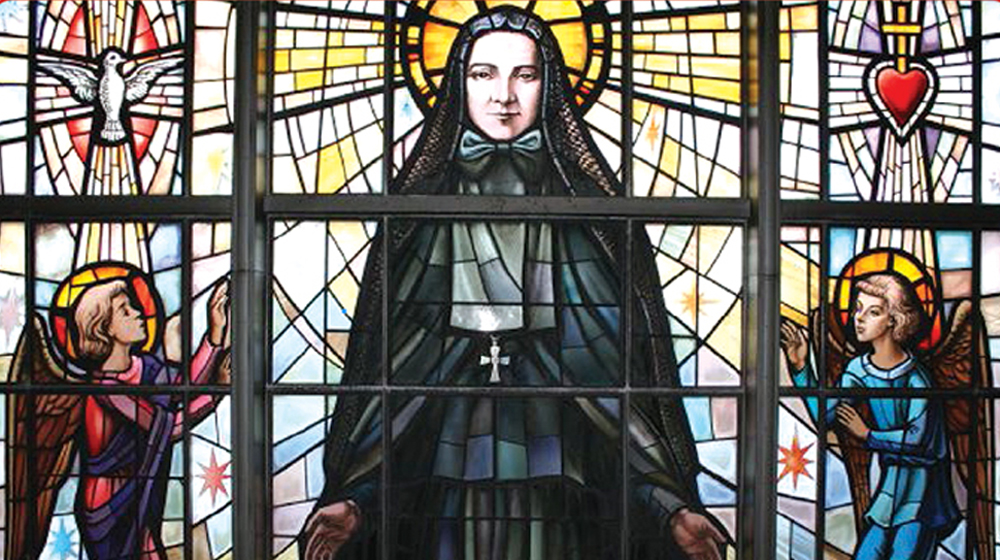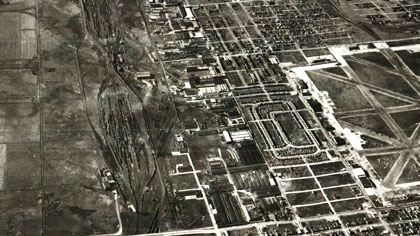archive

"Civil War Chicago: Eyewitness to History" on October 20th
Professor of History Theodore J. Karamanski, PhD and Loyola alumna Eileen M. McMahon, PhD, will discuss their new book on the Civil War’s transformative role in Chicago's development.

Richard Pryor Biographer to Speak at Loyola
Scott Saul, the author of Becoming Richard Pryor, will give a public lecture on the comedian entitled "Living with Richard Pryor: A Biographer's Tale" on Friday, April 24 at 3 PM.
Timothy Gilfoyle on "The Changing Forms of History"
Should history be a book discipline? What constitutes "acceptable scholarship" in history? Professor Timothy Gilfoyle considers the rich and diverse forms that historical scholarship take from books, digital media, and public history projects in his article "The Changing Forms of History" in April's edition of Perspectives on History, the AHA newsmagazine.

"The Rise of the Nation-Saint" on November 5th
Prof. Kathleen Sprows Cummings, University of Notre Dame, discusses a pre-circulated paper on the efforts of U.S. Catholics to secure their first canonized saint for the third meeting of the 2015-2016 Ramonat Seminar Series.

Voices of Chicago Women Activists
Celebrate Women's History Month with the Women & Leadership Archives and the Chicago Area Women's History Council. Come hear multimedia excerpts of oral histories by Columbia College honors students featuring Chicago women activists and leaders. The event will be held on Sunday, March 16th from 2:00pm-5:00pm on the 1st floor of Piper Hall.

What was Chrysler Village and how did it get its name?
Public History graduate students know and shared their work on a historic nomination for the neighborhood with Ask Geoffrey on WTTW the other night.
LEARN MORE
Closing the Gap
Sarah Doherty (PhD '12) reflects on the importance of the Preparing Future Faculty Program in equipping her, and other minority doctoral students, with the skills necessary for a career in academia.
LEARN MOREGraduate Students Nominate Chrysler Village to the National Register

Aerial view of Chrysler Village c. 1940s, visible between Midway Airport and the railroad tracks.
Nestled just south of Midway Airport within Chicago’s Clearing community area, Chrysler Village is a neighborhood with a unique past. Six of our public history graduate students had the opportunity to learn about its history close up as they researched and wrote a nomination for neighborhood to the National Register of Historic Places.
The project began when an energetic young alderman from the south side of Chicago approached Professor Theodore Karamanski about the possibility of nominating the neighborhood of Chrysler Village to the National Register of Historic Places. An early example of a planned community, Chrysler Village consists of over 200 homes built during World War II to house war industries workers. During the spring of 2013, a group of students in Dr. Karamanski’s HIST 481: Management of Historical Resources (Josh Arens, Courtney Baxter, Rachel Boyle, Kim Connelly Hicks, Chelsea Denault, and Greg Ruth) conducted extensive historical research and put together a draft of the nomination. Then, those who were able continued the project after the semester was over to revise and complete the nomination. In addition, these students held community meetings and discussed the experience at the 2014 Annual Meeting of the National Council on Public History. Finally, in the spring of 2014, Chrysler Village was officially designated as a historic district and was listed on the National Register of Historic Places.
To learn more about the project, we asked Rachel Boyle and Kim Connelly Hicks, two of the students who saw the project through the nomination process, to share their experiences.
What was the most interesting aspect of the project for you?
Rachel: Chrysler Village carries substantial historical significance on a national level. The workers who lived in Chrysler Village during World War II built the engines for the B-29 "Superfortress" bombers that helped win the war. The federal-private partnerships forged by the developers of Chrysler Village set the stage for postwar housing trends. Yet few people are aware of the neighborhood's important history; even those who have lived in proximity to Chrysler Village for years are surprised by the neighborhood's storied past. The excitement exhibited by Chicagoans when encountering the nomination's narrative demonstrates to me the power and potential of history in the public's perception of their home, their identity, and their significance.
Kim: There are two aspects of the project that I found most fascinating. First would be the process of researching and writing a National Register Nomination. There are several levels to writing a nomination, especially a district nomination. There is the "field" research, going into the district and documenting each structure and the surrounding environment. In addition, group members went to local historical societies, the Chicago Park District, and an architectural firm in an attempt to construct a complete history of this community. The second aspect was the involvement of the residents of Chrysler Village.
How has the community been involved in the project? What was it like to experience shared authority in action?
Rachel: Our research benefited greatly from informal oral histories with local residents of Chrysler Village. Furthermore, the support of the local alderman's office was instrumental in initiating and supporting the nomination. The alderman's office continues to be a strong stakeholder invested in making sure the community benefits from the National Register listing. In that sense, shared authority kept the project grounded in the community we were seeking to serve.
Kim: The residents of Chrysler Village were involved through informal oral histories and the community meetings held at the neighborhood's local field house. One particular resident informed the Alderman that she was interested and willing to talk to us about living in Chrysler Village since the late 1950s. This resident put people in the neighborhood for us. She was essential for us to understand what occurred on a day-to-day basis in Chrysler Village, what types of people lived there, what relationships formed, and how the neighborhood has changed over time. A community meeting was set up for us to inform the residents about the nomination process, where the nomination was in the process, and answer any questions or concerns they might have. After our discussion, the residents in attendance were eager to know if there were anyways they could assist in the nomination and asked about all the places we had researched information. The positive reaction from the community at this meeting reinforced my belief that this project was a worthwhile endeavor.
The project started as a National Register nomination - where would you like to see it go from there?
Rachel: Since Chrysler Village received designation as a historic district, we've maintained communication with the alderman's office and assisted in finding ways to use the National Register listing to the community's economic benefit. Furthermore, the students of this fall's HIST 480 Public History: Method and Theory class will be creating project proposals that will hopefully provide dynamic new opportunities to sustain community engagement within the neighborhood through public history.
Kim: I would like to see the project manifest into something physical in the community with community involvement. I have thought about the idea of building a Victory Garden in Lawler Park, the park built at the center of the neighborhood, with interpretive text about the origins of Chrysler Village and how the garden relates the same era. As the neighborhood continues to change and evolve, having something to mark how Chrysler Village began, how it has changed, and how it continues to change is important. I feel the best people to continue that project are those who live in Chrysler Village.
For more information on Chrysler Village and to see these students' excellent work, check out the full nomination at the National Register site.
